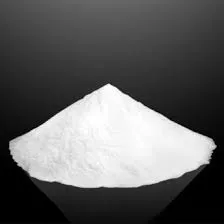
Dec . 22, 2024 20:08 Back to list
hydroxypropyl methyl
Hydroxypropyl Methylcellulose An Overview
Hydroxypropyl methylcellulose (HPMC) is a versatile and widely used cellulose ether that has gained significant attention across various industries due to its unique properties and applications. As a modified polymer derived from natural cellulose, HPMC offers a range of features that make it an ideal ingredient in pharmaceuticals, food production, cosmetics, and construction, among other sectors.
Chemical Structure and Properties
HPMC is synthesized through the alkylation of cellulose with propylene oxide and methyl chloride. This complex process leads to the introduction of hydroxypropyl and methyl groups into the cellulose backbone, enhancing its solubility and functionality. The distinct chemical structure of HPMC results in its unique properties, including excellent thickening, film-forming, and emulsifying capabilities.
One of the most notable attributes of HPMC is its ability to dissolve in cold water, forming a clear and viscous solution. This characteristic contrasts with many other cellulose derivatives, which typically require heat to dissolve. The solubility of HPMC varies depending on the degree of substitution of hydroxypropyl and methyl groups, allowing for a wide range of products tailored to specific applications.
Applications in Pharmaceuticals
HPMC's unique properties make it an essential component in the pharmaceutical industry. It is frequently utilized as a binder and film-forming agent in tablet formulations, enhancing the tablet's durability and ensuring uniform dispersion of active ingredients. Additionally, HPMC can control the release of drugs, making it invaluable in creating sustained-release formulations. The viscosity of HPMC solutions provides the ability to modify the release dynamics of pharmaceutical compounds, allowing for prolonged therapeutic effects.
Moreover, HPMC is employed in ophthalmic preparations due to its biocompatibility and ability to retain moisture, which is critical for eye drops and artificial tears. Its use in gels and creams also helps in improving the texture and appearance of topical formulations.
Role in Food Production
hydroxypropyl methyl

In the food industry, HPMC serves as a food additives and thickening agent. It enhances the texture of food products, providing a creamy or smooth mouthfeel which can be crucial in items like sauces, dressings, and frozen desserts. Furthermore, HPMC acts as an emulsifier, stabilizing mixtures of oil and water, thereby preventing separation and ensuring product consistency.
The use of HPMC in food products is often preferred because it is considered safe for consumption and can be utilized in gluten-free formulations, improving the texture and integrity of baked goods without gluten.
Applications in Cosmetics and Personal Care
HPMC is also prevalent in cosmetics and personal care products. Its thickening and film-forming properties are beneficial in lotions, creams, shampoos, and conditioners. It helps to create a desirable viscosity and provides stability to emulsions, enhancing the overall performance of the product. Due to its compatibility with various formulations, HPMC is often found in hair styling products, providing a flexible hold while allowing for easy restyling.
Construction Industry Uses
In the construction sector, HPMC plays a critical role as a polymer additive for cement-based products such as mortars, plasters, and tile adhesives. The inclusion of HPMC improves the workability and adhesion of these materials, facilitating easier application and ensuring a stronger bond upon drying. The water retention properties of HPMC help to prevent premature drying, thereby enhancing the curing process and overall durability of the construction materials.
Conclusion
In conclusion, hydroxypropyl methylcellulose is a multifunctional compound with a broad spectrum of applications across various industries. Its unique solubility, thickening capacity, and film-forming properties make it indispensable in pharmaceuticals, food production, cosmetics, and construction. As research continues to unveil new potential applications, HPMC is likely to remain a key ingredient in the formulation and production of various consumer goods, contributing to advancements in product performance and user satisfaction. The versatility and effectiveness of hydroxypropyl methylcellulose signify its importance in modern industry and everyday life, demonstrating the power of synthetic derivatives of natural polymers.
-
Versatile Hpmc Uses in Different Industries
NewsJun.19,2025
-
Redispersible Powder's Role in Enhancing Durability of Construction Products
NewsJun.19,2025
-
Hydroxyethyl Cellulose Applications Driving Green Industrial Processes
NewsJun.19,2025
-
Exploring Different Redispersible Polymer Powder
NewsJun.19,2025
-
Choosing the Right Mortar Bonding Agent
NewsJun.19,2025
-
Applications and Significance of China Hpmc in Modern Industries
NewsJun.19,2025







